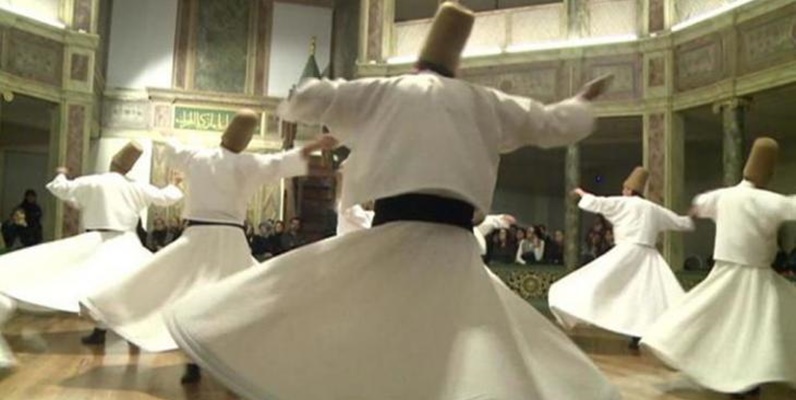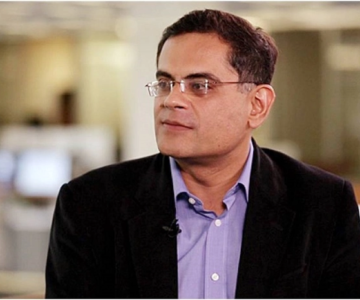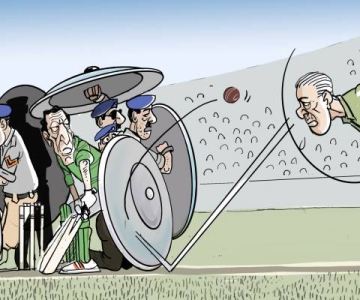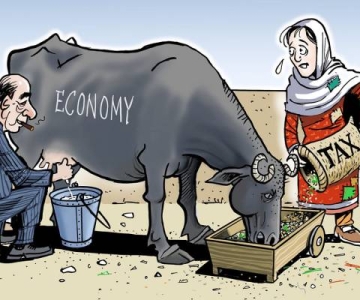This was published in The Friday Times in the May 22-29, 2009 issue
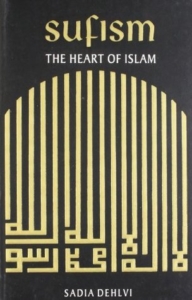 Getting a visa to India is a nightmare for ordinary mortals. My application was not very politely returned last month with technical objections. It was only when a letter from Harper Collins arrived that the High Commission rather efficaciously allowed me to enter enemy territory, that too with special instructions that cantonments were out of bounds. I guess the South Asian officialdoms have yet to discover that Google Earth has permanently altered the shape of boundaries and secrecy.
Getting a visa to India is a nightmare for ordinary mortals. My application was not very politely returned last month with technical objections. It was only when a letter from Harper Collins arrived that the High Commission rather efficaciously allowed me to enter enemy territory, that too with special instructions that cantonments were out of bounds. I guess the South Asian officialdoms have yet to discover that Google Earth has permanently altered the shape of boundaries and secrecy.
I had to plan this rushed sojourn to attend the launch ceremony of Sadia Dehlvi’s book that has now hit the Indian bookshops with a bang and will soon be found in Pakistan. Sufism – the Heart of Islam is the culmination of Sadia’s journey of self discovery, and to use Bulleh Shah’s metaphor, entree into the inner temples of the heart. This was no ordinary launch, as I have been a literary companion in this path that Sadia has taken – right from the conception of the book, its shifting hues and drafts, the magnificent illustrations and poetry translations, and of course its final shape.
I had almost given up the idea of being present at the launch in the face of visa hurdles. I think the gods intervened, or as I told Sadia our beloved saints – Khwaja Gharib Nawaz of Ajmer and Nizamuddin Auliya of Dilli – allowed it to happen. The launch brought together a host of other friends who have been involved in giving various stirs to this book-brew.
The launch took place at Hotel Le Meridian and was a major Delhi hungama, as the hall was packed with more guests than it could accommodate. The nonagenarian Khushwant Singh made it despite his formal goodbyes to social occasions, and so did many others who have been friends with Sadia.
The inimitable thumree singer Vidya Rao launched the ceremony with an ensemble of what is these days known as Sufi music. She presented a Na’at in poorabi ang that was a delightful piece, establishing intimacy with the last Prophet (pbuh) urging him for blessings. The folk idiom made it even more striking than the usual renditions of this genre one is used to in Pakistan. A Hindu woman offering salutations to Hazrat Mohammad (pbuh) was a rare sight by itself. My favourite hierarchy of Sufi love, sung so beautifully by Vidya, was:
Khwaja milay tau Ali milay
Ali milay tau Nabi milay
Nabi milay tau Khuda mila
Khushwant Singh had to leave early, so he made a speech that was full of his classic witticisms. Declaring that he was free of God in his mental landscape, he had started to believe in miracles and the biggest miracle was Sadia writing her book! Mushir ul Hasan, the keynote speaker praised the book and its central message that Sufism was embedded in Islamic thought. He was a little critical of the Naqshbandi school of Sufism that was orthodox in his opinion, and had a sectarian bias in its worldview.
Karthika V. K., Chief Editor, Harper Collins India was most pleased with the book and she was also quick to note Sadia’s devotion to this project and spoke of how absorbed in the book writing and production she had been for the last one year.
Sadia was beaming with things coming together. Even on this occasion she could not stop herself from cracking jokes about the writing process, and she also spoke of how scared she was of her mother’s wrath if anything went wrong. The author’s mother, Zeenat Dehlvi, has been the proverbial lighthouse in introducing her to the Sufi tariqa or the path. Using several translations of mystic verses Sadia projected a lively, intimate and personal understanding of Sufi principles and vision. Oroon Das, an eminently talented theatre actor ended the evening with renditions of a wide range of Sufi verse from the book – from Hafez and Rumi to Bulleh Shah, as well as more contemporary Sufi poets.
Sadia Dehlvi for some time was known in Delhi as a page three persona – attending parties and events, and pictured as a secular, brainy Muslim diva holding forth on various issues – until her journalistic career took a turn over the last few years as the ‘principal’ spokesperson for Indian Muslims. Her writings and television appearances have harped on some bold themes such as the need for Muslims to look into their own backyard, use a bit of rationality and above all reject the orthodox Wahabi streams that seem to have engulfed the Muslim imagination in the era of militant Islamism.
In this process of getting to know herself and her cultural heritage, her focus shifted to an exploration of Sufism and its various historical movements. In the subcontinent, the Muslim identity cannot be separated from Sufi moorings, given the monumental role that the travelling saints, dervishes and fakirs played in converting the native inhabitants of India. The Muslim ruling classes were interested in India’s wealth and the capture of its political power since the eleventh century. Therefore, the rulers, most of whom were men of Central Asian or Persian descent were unlikely candidates to be spreaders of Islam’s egalitarian message.
Thus the great mingling of mystical Islam and India’s local, folk traditions found a synthesis in the South Asian brand of Sufism. But this was an endeavour that remained within the intellectual and spiritual depth of core Islamic beliefs. The current erroneous observations of Sufism as a separate belief-system from ‘Islam’, therefore, is an uninformed view and betrays the lack of understanding of this drummed-up danger religion.
For instance the book mentions the Prophet Muhammad declaring in a Hadith Qudsi: ‘Heaven and earth cannot contain Me but the heart of my faithful servant contains Me.’ The mystic poet Fariduddin Attar illustrates the state of the lovers in this couplet translated by Annmarie Schimmel:
When you seek God, seek him in your hear
He is not in Jerusalem, nor in Mecca nor in Hajj
Sufism takes the reader in an engaging way, through the layers of Islamic beliefs, and explains how a three-fold structure comprising “sharia, the outer law; tareeqa the inward path; and haeeqa, the arrival at the reality of Allah” are the different facets of a universal worldview of the religion. The various stages of the Sufi path such as hal (intoxicated state) and maqaam (station) are also elaborated well for lay readers.
The most illuminating part of the book is the evolution of Sufi schools of thought and their key beliefs and approaches. While browsing through the text one marvels at centuries of synthesis in the Indian subcontinent, which explains why the dergahs remain such a focus of public attention and imagination.
What I especially like about this volume is its immediate connection with readers. For example Sadia writes in a chapter entitled Tariqa – the Way of the Sufi:
“Growing up in an Irish convent boarding school, I regularly went to church, sang Christmas carols, baked Easter eggs and imbibed Christian values. During annual holidays a maulana, a religious teacher, came home to teach the Quran to all the children. He instilled the fear of God into us, with the result that fear remained the only emotion that the heart felt for the Creator. Somehow, this overwhelming fear kept me connected to Allah, despite often wanting to break away completely. Traversing the Sufi path changed my attitude, for it teaches that prayer rituals are worth little if not accompanied by love and sincerity.”
Whilst exploring the core of Sufi thought, the book traces the extraordinary lives of the early Sufis including the companions of the Prophet (pbuh), their sayings, and their emphasis on the purification of the heart. For modern readers, the larger narrative covers the period of early Islam to its current nemesis in the shape of militant ideologies. The book‘s key argument is also contemporary: how Islamism is the undoing of a faith founded on the principles of love, peace and tolerance. The engaging style in which the book insightfully examines the complex relationship of Sufism with both Muslim and non-Muslim societies, should be instructive for readers outside South Asia as well.
Sadia’s book is a timely addition to the debates on Islam, Sufism and its accessibility and reader-friendliness. This is bound to attract a large number of readers.
EXCERPT
The most common response on hearing the title of my book has been: ‘But what has Sufism got to do with Islam?’ I realize that Islam is perceived as a faith with harsh laws, whereas Sufism represents wonderful poetry, dance, art and an appealing form of universal love. It is difficult for some Muslims and most non- Muslims to accept that Sufism is the spiritual current that flows through Islam. Sufi Masters are called ahl e dil, ‘people of the heart’. They teach that religion has no meaning unless warmed by emotions of love, and interpret Sufism as being the heart of Islam. However, I do understand that Sufism has come to mean something quite different in the language of the New Age. Disillusioned with religion and the problems associated with it in secular democratic societies, people tend to mix and match elements from various religious traditions that personally appeal to them…The Quran informs us that Islam is not something that began with the Prophet Muhammad some 1400 years ago, but with the creation of the universe in which Adam was the first Prophet. Sufism is the timeless art of awakening the higher consciousness through submission to the Divine Will. The Sufi doctrine goes far beyond history and is rooted in the primordial covenant all unborn souls made with their Creator. Many friends view my visits to dargahs, Sufi tombs, as senseless medieval superstition. Some orthodox Muslims even insist that Sufism is an innovation in Islam-a sinful practice that our ancestors picked up from Hindu idol-worshipping traditions. They reason that since most of our ancestors were Hindus, some of us are still using pagan methods like singing, to please the gods… I would also like to share the miracle of my son’s birth. The best of infertility specialists had categorically told me that due to various complications it appeared virtually impossible for me to have a child. I was 32 years old, with the biological clock ticking away. I wanted a child desperately, but the doctors were not hopeful. My mother reprimanded me for giving up hope and despairing of God’s grace. She advised me to go to the dargah of Khwaja Moinuddin Chishti, popularly called Gharib Nawaz, Patron of the Poor. I travelled to Ajmer and pleaded for his blessings, vowing to come back for thanksgiving if my prayer was granted. In Delhi, I regularly visited the dargah of Hazrat Shah Farhad and lit candles for the granting of a child… My prayers were answered and a few months later there was an embryo kicking away in my womb, causing boundless joy. My son Arman Ali was born in Karachi through a Caesarean section, and while being wheeled away after the operation I faintly heard the doctor comment on the miracle birth. According to the Islamic calendar, Arman was born on the sixth of Rajab, a date that marks the annual Urs, death anniversary, of Khwaja Gharib Nawaz. The sixteen-year-old lad is a musically talented child, and this is a gift that I believe is from the Sufi Master… While researching the biographies and discourses of the Sufi Masters, I slowly began to understand traumatic experiences as both nourishing and necessary for those who truly seek to purify and liberate the mind, body and soul… I discovered that spiritual endeavours leading to states of ecstasy were usually rooted in grief. God, by His own admission to Moses, revealed that He lived in broken hearts. All Sufis believe that both affliction and bounties are the blessings of God. Something stirred my soul and I began to see myself as blessed rather than cursed by God. It changed my relationship with Him from one of animosity to one of friendship and love. I made a conscious, sustained effort to apply some basic principles of Sufism to my shattered life. I vowed to develop rida, resignation to the will of Allah; tawakkul, trust in Him; sabr, patience; and mohabba, love. I found that it soon provided me with the strength of a lioness and the flight of a falcon. I no more fear life or death, for I see life as an endurance of God’s will, and death as something that unifies us with the Creator. Extract from Sufism: The Heart of Islam – by Sadia Dehlvi. Published Harper Collins
